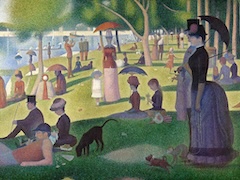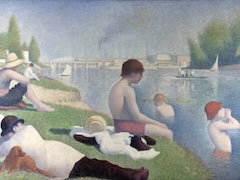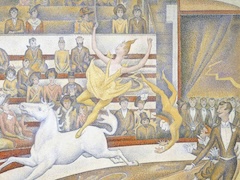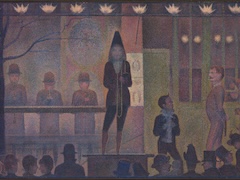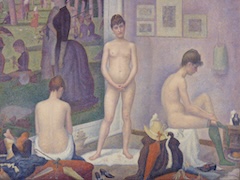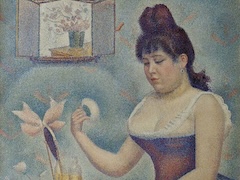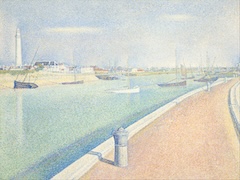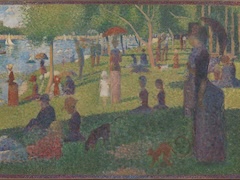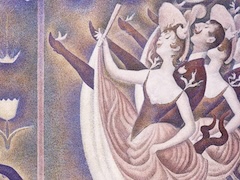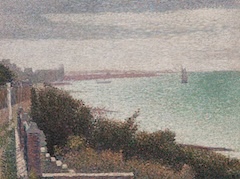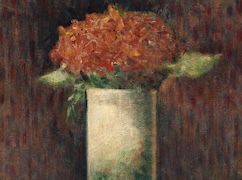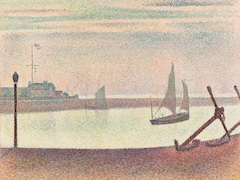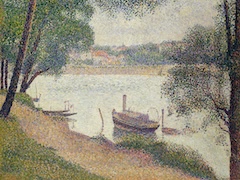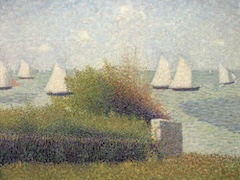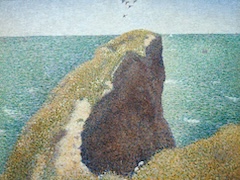The Lighthouse at Honfleur by Georges Seurat
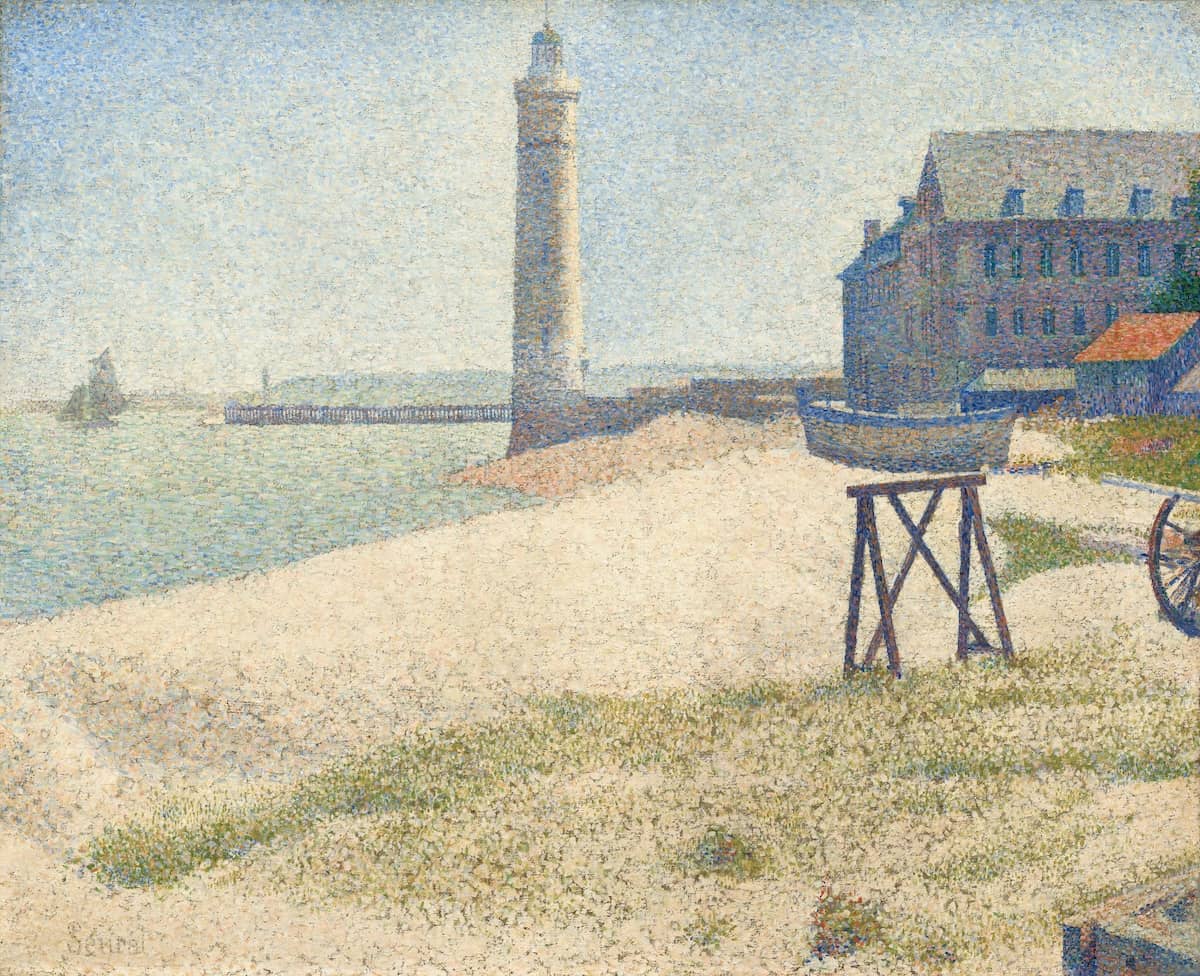
The Lighthouse at Honfleur and Seascape at Port-en-Bessin, Normandy belong to a group of landscapes that Seurat painted between 1886 and 1888. Many are devoted to interpreting the aqueous light of the seashore; all have carefully thought out compositions. The key to the design of The Lighthouse at Honfleur is the sawhorse in the foreground. It introduces the theme of cross-cut angles, repeated by the boats, roofs, shore-line, retaining wall, and even shadows on the sand. If you hide the sawhorse with your hand the picture becomes empty and meaningless. Similarly, cover the two cranes in the upper left-hand corner of Seascape at Port-en-Bessin, Normandy and the structure of the picture will vanish.
In large part Seurat accurately recorded what he was painting, as is proved by photographs taken of the same scenes; but he carefully chose the exact location from which to paint. Photographic veracity, however, does not apply to the subordinate details of the scenes. On the beach at Honfleur the sawhorse, the broken wheel, the rowboat in the middle distance, and the sailboat further away - all intrinsic elements of the design - were arbitrarily arranged by the artist, as were the two cranes and the clouds blown into undulating lines by an improbable wind in the Port-en-Bessin landscape.
Both pictures were executed in the Divisionist technique Seurat developed. He would place at the top of his palette a line of pure primary colors and at the bottom the same number of dabs of white pigment. Between the two lines was a third row of tints, a blend he made by mixing the prismatic hues at the top and the colorless white blobs at the bottom. Dots and strokes from these three sequences of pigment were then placed on the canvas side by side to meld together in the spectator's vision. Seurat was interested in the science of color, a subject much discussed during his lifetime. He read and absorbed the theories of the French scientist Eugène Chevreul and the American Ogden Rood. These were the most advanced texts on optical color then available.
Such Divisionist paintings, although photographic, shocked contemporary taste, and during his short life of thirty-one years Seurat sold almost nothing.

